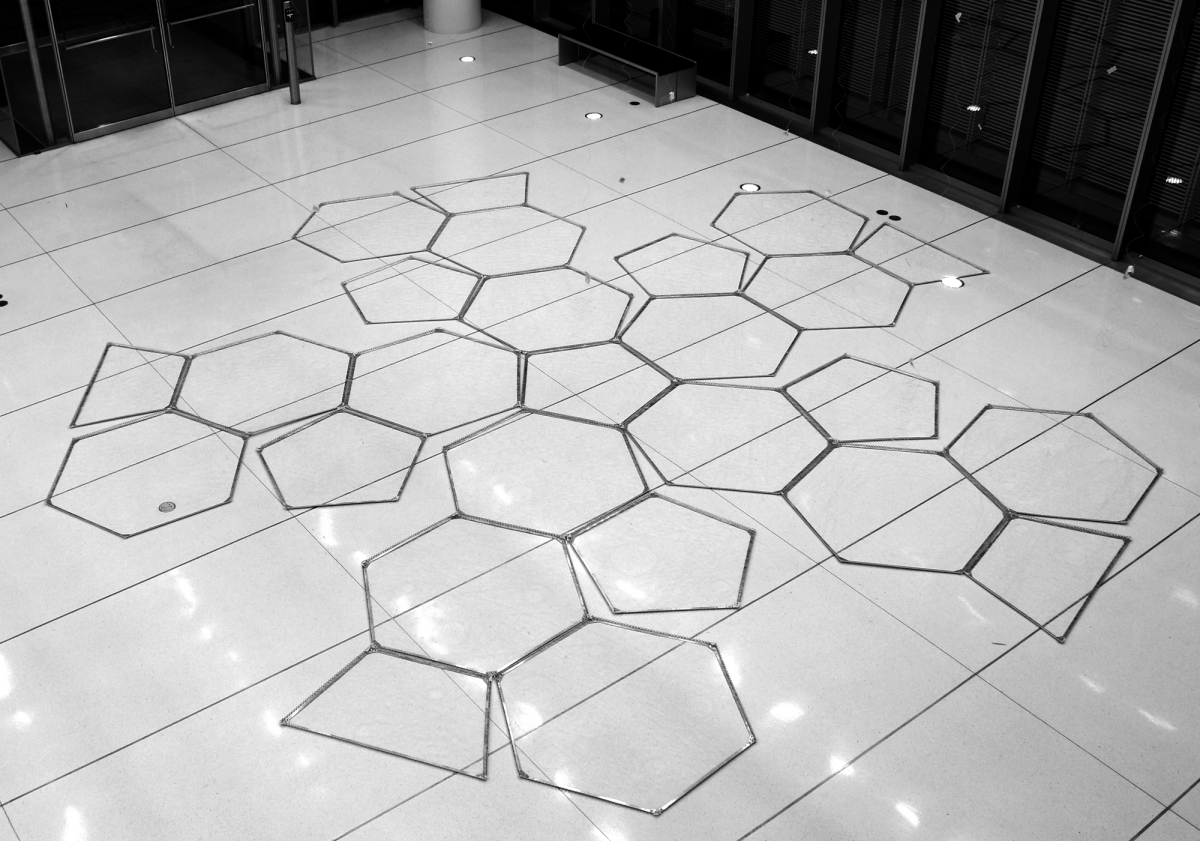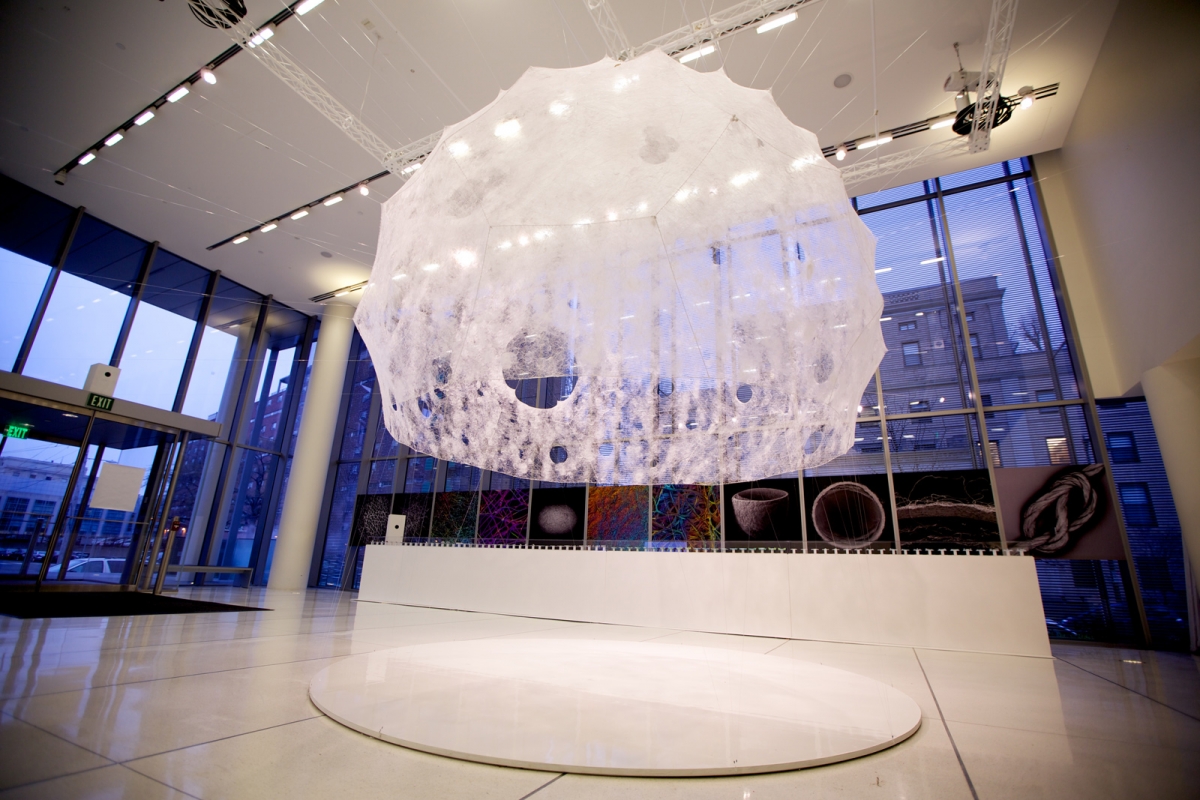David Gordon : Looking Outwards
Admiration : Silk Pavilion at the MIT Media Lab
Silk Pavilion, a creation of the Mediated Matter Research Group at MIT Media Lab, is an artistic powerhouse of a project. The group started with a large polygonal frame:
 Polygonal frame before assembly into its dome shape
Polygonal frame before assembly into its dome shape
Using a CNC threading machine, the group created a large globular web out of a single silk thread which was woven over the frame in such a way as to leave gaping holes in the structure. Next, 6500 silk worms were placed upon the webs, and left to their own devices. The worms acted as a sort of “biological printer”, providing an additional layer of silk over the CNC weaving. The collaboration of worm and machine produced a final result which cannot be called completely organic or synthetic:
 Hybrid silk web, with metal frame removed.
Hybrid silk web, with metal frame removed.
I admire this piece chiefly because both the process and final result independently wow me. Silk worm assisted CNC weaving is an entirely unique mixture of mediums that nobody has ever attempted before. In addition, the final web is intricate, ethereal, and could hold its own regardless of its method of creation.
Surprise : etcpp
etcpp, by Benjamin Stephan and Christoph Haag, surprised me in that it is a work of art which in turn creates more art. Essentially, etcpp consists of a computer controlled pen plotter and a mound of granular matter. The device is fed an animation in the form of sequential images, which it first draws into the mound and then photographs, frame by frame. The result is a stopmotion video which imperfectly (yet charmingly) recreates the original animation. The etcpp can be used to create an infinite number of these engraved stopmotion videos.
Disappointment : LZRTAG
 A LZRTAG gif tag, as viewed through an Android device.
A LZRTAG gif tag, as viewed through an Android device.
LZRTAG is based upon an ingenious core concept: allowing the user to vandalize any surface through computer vision assisted augmented reality. However, the app fails miserably in executing said concept in an intuitive and fun-to-use manner. Firstly, in order to place anything on a surface one must first go to LZRTAG.com and create a ‘tag.’ This ruins the flow of the app, and a tag creator should have been the first thing built into the app interface. Secondly, no filter seems to exist as to who can see which tags. A “tag group” option, where only specific users can see each other’s tags, would turn LZRTAG into a primarily social app, where friends could leave each other messages on walls or add to a collaborative tag together.